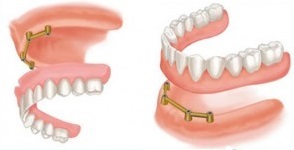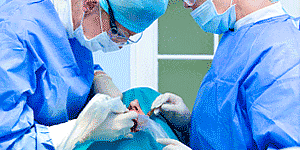
توموگرافی کامپیوتری و کاربرد سی تی اسکن
2015-11-23VIP essays: ready to write
2015-11-23radiology is important in the diagnostic assessment of the dental patient and guidelines for the selection of appropriate radiographic procedures for patients suspected of having dental and maxillofacial disease are available.1 The American Academy of Oral and Maxillofacial Radiology (AAOMR) has established “parameters of care” providing rationales for image selection for diagnosis, treatment planning and follow-up of patients with conditionsaffecting the oral maxillofacial region, including temporomandibular joint (TMJ) dysfunction (Parameter 2), diseases of the jaws (Parameter 3) and dental implant planning (Parameter 4).2 Although combinations of plain x-ray transmission projections and panoramic radiography can be adequate in a number of clinical situations, radiographic assessment may sometimes be facilitated by multiplanar images including computed tomographs
For most dental practitioners, the use of advanced imaging has been limited because of cost, availability and radiation dose considerations; however, the introduction of cone-beam computed tomography (CBCT) for the maxillofacial region provides opportunities for dental practitioners to request multiplanar imaging. Most dental practitioners are familiar with the thin-slice images produced in the axial plane by conventional helical fan-beam CT. CBCT allows the creation in “real time” of images not only in the axial plane but also 2-dimensional (2D) images in the coronal, sagittal and even oblique or curved image planes — a process referred to as multiplanar reformation (MPR). In addition, CBCT data are amenable to reformation in a volume, rather than a slice, providing 3-dimensional (3D) information. The purpose of this article is to provide an overview of the unique image display capabilities of maxillofacial CBCT systems and to illustrate specific applications in clinical practice
Types of CT Scanners
Computed tomography can be divided into 2 categories based on acquisition x-ray beam geometry; namely: fan beam and cone beam (Fig. 1). In fan-beam scanners, an x-ray source and solid-state detector are mounted on a rotating gantry (Fig. 1a). Data are acquired using a narrow fan-shaped x-ray beam transmitted through the patient. The patient is imaged slice-by-slice, usually in the axial plane, and interpretation of the images is achieved by stacking the slices to obtain multiple 2D representations. The linear array of detector elements used in conventional helical fan-beam CT scanners is actually a multi-detector array. This configuration allows multi-detector CT (MDCT) scanners to acquire up to 64 slices simultaneously, considerably reducing the scanning time compared with single-slice systems and allowing generation of 3D images at substantially lower doses of radiation than single detector fan-beam CT arrays
Advantages of CBCT
CBCT is well suited for imaging the craniofacial area. It provides clear images of highly contrasted structures and is extremely useful for evaluating bone.8,9 Although limitations currently exist in the use of this technology for soft-tissue imaging, efforts are being directed toward the development of techniques and software algorithms to improve signal-to-noise ratio and increase contrast. The use of CBCT technology in clinical practice provides a number of potential advantages for maxillofacial imaging compared with conventional CT
X-ray beam limitation: Reducing the size of the irradiated area by collimation of the primary x-ray beam to the area of interest minimizes the radiation dose. Most CBCT units can be adjusted to scan small regions for specific diagnostic tasks. Others are capable of scanning the entire craniofacial complex when necessary
Image accuracy: The volumetric data set comprises a 3D block of smaller cuboid structures, known as voxels, each representing a specific degree of x-ray absorption. The size of these voxels determines the resolution of the image. In conventional CT, the voxels are anisotropic — rectangular cubes where the longest dimension of the voxel is the axial slice thickness and is determined by slice pitch, a function of gantry motion. Although CT voxel surfaces can be as small as 0.625 mm square, their depth is usually in the order of 1–2 mm. All CBCT units provide voxel resolutions that are isotropic — equal in all 3 dimensions. This produces submillimeter resolution (often exceeding the highest grade multi-slice CT) ranging from 0.4 mm to as low as 0.125 mm Accuitomo
Rapid scan time: Because CBCT acquires all basis images in a single rotation, scan time is rapid (10–70 seconds) and comparable with that of medical spiral MDCT systems. Although faster scanning time usually means fewer basis images from which to reconstruct the volumetric data set, motion artifacts due to subject movement are reduced
Dose reduction: Published reports indicate that the effective dose of radiation (average range 36.9–50.3 microsievert [µSv])10–14 is significantly reduced by up to 98% compared with “conventional” fan-beam CT systems (average range for mandible 1,320–3,324 µSv; average range for maxilla 1,031–1,420 µSv).10,11,15–17 This reduces the effective patient dose to approximately that of a film-based periapical survey of the dentition (13–100 µSv)18–20 or 4–15 times that of a single panoramic radiograph (2.9–11 µSv).14,17–20
Display modes unique to maxillofacial imaging: Access and interaction with medical CT data are not possible as workstations are required. Although such data can be “converted” and imported into proprietary programs for use on personal computers (e.g., Sim/Plant, Materialise, Leuven, Belgium), this process is expensive and requires an intermediary stage that can extend the diagnostic phase. Reconstruction of CBCT data is performed natively by a personal computer. In addition, software can be made available to the user, not just the radiologist, either via direct purchase or innovative “per use” licence from various vendors (e.g., Imaging Sciences International). This provides the clinician with the opportunity to use chair-side image display, real-time analysis and MPR modes that are task specific. Because the CBCT volumetric data set is isotropic, the entire volume can be reoriented so that the patient’s anatomic features are realigned. In addition, cursor-driven measurement algorithms allow the clinician to do real-time dimensional assessment
reference






